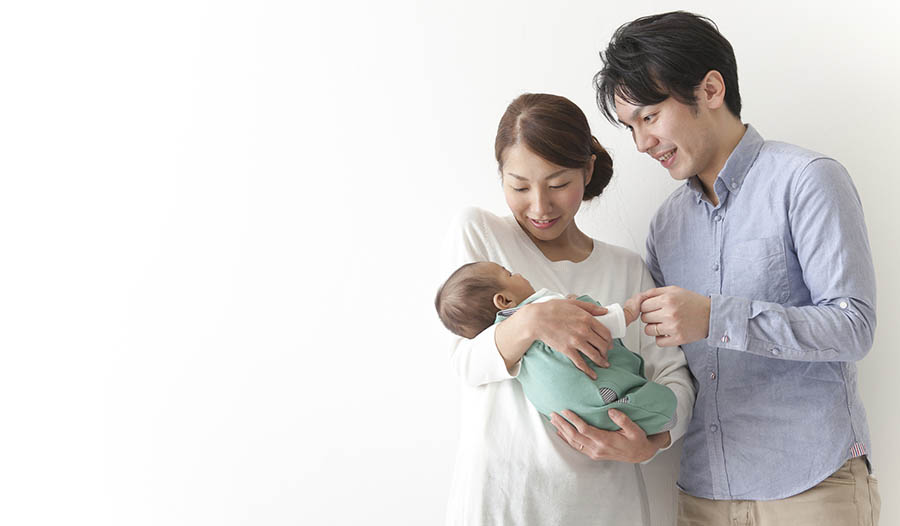Az újszülöttekkel kapcsolatos legfontosabb kérdések megválaszolt

Ha újszülött van, valószínűleg kérdései vannak. Itt válaszolok azokra, amelyeket gyermekorvosként leggyakrabban kapok.
Mit tehetek egy gázos babával?
Minden csecsemő gázt termel, és a legtöbb könnyen enyhíti a gázt. A csecsemőknél a gáz általában a lenyelt levegőnek köszönhető, ami sok esetben fordul elő a csecsemők sírásával. Sok csecsemő kényelmetlenséget érez a gázfájdalom miatt. Észreveheti a piskolást, a lábak felhúzását és a sírást. A szülők aggódnak amiatt, hogyan tehetik a csecsemőket „kevésbé gázossá. „Íme néhány dolog, ami segíthet egy gázos babának megkönnyebbülésben.
- Kerékpározó lábak: Fektesse a babát a hátába, és mozgassa a lábát, mintha biciklire pedálozná.
- Hasdörzsölés: Fektesse a babát a hasára sík felületre, majd óvatosan dörzsölje a hasát a kezével.
- Melegség: Helyezzen meleg törülközőt vagy mosogatórongyot a baba hasára (a ruhák tetejére), majd tegye be a csecsemőt.
- Etetési pozíció: Etetés közben tartsa a baba fejét és nyakát magasabbra, mint a gyomra. Palackadagolás esetén enyhén emelje fel a palack alját, hogy megakadályozza a levegő felhalmozódását a mellbimbó körül.
- Burp: Gyakori böfögés etetés közben és utána
- Gázcsillapító gyógyszerek: A gázos csecsemők sok szülője szerint probiotikumok, Mylicon cseppek és gripe víz segít enyhíteni a csecsemőknek a gázfájdalmakat.
Ha csecsemőjének túlzott gázfájdalma van, amely nem reagált a fenti gyógymódok némelyikére, beszéljen orvosával az étrendről, ha szoptatja, és a baba étrendjéről, ha tápszerrel táplálja.
Hogyan tudom elaludni a babám éjszaka?
Az újszülöttek gyakran nem tesznek különbséget éjszaka és nap között, amikor alvásról van szó. 24 órás órán futnak, és korán meg kell tanulniuk, hogy az éjszakai idő alvásra és étkezésre szolgál. Az új szülőknek is pihenésre van szükségük. Fontos, hogy éjszaka más rutinot mutasson be a babának, így az éjszakai etetés között alszik. Így van:
- Nappali: Tartsa távol az árnyalatokat, hogy a napfény bejusson. Világok világítanak. Menj sétálni. Beszélj a babával. A csecsemők általában napközben legfeljebb 2 órát alszanak.
- Éjszakai: Tartsa sötétben a helyiséget. Használjon gyenge fényt - például ápoló lámpát-, hogy minimális fényt biztosítson a váltáshoz és az etetéshez. Amikor a baba táplálásra ébred, először cserélje ki a pelenkát -ot, majd alaposan bevonja, és etesse-et, majd azonnal tegye vissza a babát alvási helyére, amikor az etetés véget ér.
A csecsemők napi 16 órán át alszanak rövid 2-3 órás időszakokban. Néhány csecsemő 2-4 hónapos korban egész éjszaka alszik. Fontos megjegyezni, hogy minden baba más. A csecsemő étrendjének átállása — például az szoptatás -ról tápszerre váltás — nem segít a babának az éjszakai alvásban.
A legjobb módja annak, hogy a baba éjszaka hosszabb ideig aludjon, ha korai rutinot alakít ki, és ragaszkodjon hozzá. A csecsemők megtanulják önmegnyugtatni azáltal, hogy álmosan alszanak, de nem alszanak. A nyugodt, nyugtató zene vagy hanggépek segíthetnek az alvási rutinban is.
Hogyan kezeljem a bölcsősapkát?
Bölcsősapka (idősebb gyermekeknél és felnőtteknél korpásodás) vastag fehér vagy sárga pikkelye, amely foltokban jelenik meg a fejbőrön, a fül mögött és a szemöldökön. A kutató úgy véli, hogy ezt a bőr mirigyeinek túltermelése okozza. A bölcsősapka nagyon gyakori a csecsemőknél körülbelül két hónapos kor után. Az állapot ártalmatlan a csecsemők számára, de gyakran megőrülteti a szülőket. A legtöbb szülő számára nehéz harcolni a vágyat, hogy ezeket a zsíros pikkelyeket a baba fejbőrén lehessen felvenni. A bölcsősapka kezelhető és enyhíthető néhány egyszerű otthoni gyógymóddal, de nem gyógyítható. Általában egy éves korra megszűnik, de néhány gyermek esetében kisgyermekkorban megismétlődhet.
A bölcsősapka ideiglenes enyhítésére a következőket teheti:
- ásványolajat, kókuszolajat vagy bébiolajat dörzsölje a baba fejbőrére, hagyja 10 percig ülni, majd samponozzon, és finoman mossa le a pikkelyeket puha fogkefével vagy mosogatóronggyal.
- Használja a sok gyengéd bölcsősapka sampon egyikét, vigye fel és hagyja állni néhány percig az öblítés előtt
- Beszéljen kezelőorvosával a bölcsősapka és a bölcsősapka szélsőséges eseteivel kapcsolatban, ha gyógyszeres samponok és krémek mérlegelhetők.
Miért sír a babám?
A sírás a baba kommunikációs módja. A csecsemők sok okból sírnak, és a legtöbb csecsemő napi több órán át sír. A sírás aggasztó azoknak a szülőknek, akik csak azt akarják, hogy babájuk boldog és megnyugtatott legyen. Amikor a baba sír, nézze meg a sírás leggyakoribb okait, és próbálja meg kezelni a problémát.
A sírás gyakori okai: nedves vagy kakakos, gázos, éhes, fáradt, meleg vagy hideg. Ezeket általában nagyon könnyű kezelni. De a csecsemők néha olyan okok miatt sírnak, amelyeket a szülők nem olyan könnyű azonosítani. A csecsemők nagyon érzékenyek a környezetükre, és gyakran 6-8 hetes koruk között nyilvánvaló ok nélkül sírnak. Lehet, hogy a fény túl erős, a kutya túl hangos, a hangja túl magas, a ház légfrissítője túl vanília. Amikor kielégítetted a baba összes szükségletét, és még mindig sír, ideje megnyugtatni őt. A Dr. Harvey Karp által kifejlesztett „5 S” technika a kedvenc, szlam-dunk módszerem egy nyugodt baba megnyugtatására. Az alapok a szopás, a dörzsölés, az oldalsó fekvés és a lengődés.
Mennyit kell etetnem a babámat?
Minden csecsemő egyedülálló, amikor arról van szó, hogy mennyit és milyen gyakran eszik. A szoptatott csecsemők 1,5-4 óránként esznek, és gyakran csoportosítanak néhány etetést, különösen esténként. A szoptatott újszülötteket arra ösztönzik, hogy olyan gyakran ápoljanak, amennyit csak akarnak, és ameddig akarnak, amíg az élet első hetében kialakul a tejellátás, és az anya és a baba együtt tanulnak. Tápszerrel táplált csecsemők általában legalább egy uncia tápszert fogyasztanak 2-4 óránként, mire elhagyják a kórházat. Az első napok után a legtöbb tápszerrel táplált csecsemő 2-4 óránként 2-3 unciát vesz be. Mind a tápszerrel, mind a szoptatott csecsemőknek napi D-vitamin-kiegészítőre van szükségük . Gyermekorvosa értesíti Önt, mikor hagyhatja abba a D-vitamin adagolását, de legalább 4-6 hónapot tervez.
Néhány további etetési tipp a következő:
- Kezdje el etetni, mielőtt a baba sír. Sokkal könnyebb rávenni a szoptató csecsemőt, a palackban tápláló csecsemőt pedig, ha nyugodt, vegye be az üveget. A korai éhségjelek: gyökeresedés, kéz vagy ököl szájába helyezése, a száj kinyitása vagy a nyelv kinyújtása és a fej egyik oldalról a másikra mozgatása. Az őrült éhes csecsemőket nehéz etetni.
- A növekedési ütések 10 nap körül, és ismét 3-4 hét körül fordulnak elő, a csecsemők gyakran többet esznek ezekben az időkben.
- Az éjszaka hosszabb ideig alvó fiatal csecsemők gyakran gyakrabban esznek napközben, hogy pótolják az éjszakai elmulasztott etetést. Gyermekorvosa megmondja, mikor rendben van, ha hagyja, hogy a baba négy óránál többet aludjon az éjszakai etetés között.
- Fontolja meg a tápszer mennyiségének növelését üvegenként, ha a csecsemő nem elégedett az etetés végén, vagy ha a baba éhes, és 1-2 órán belül újabb etetést szeretne.
Hogyan csökkenthetem a SIDS kockázatát?
SIDS egy hirtelen csecsemőhalál szindróma, és az új szülők attól tartanak. 2015-ben mintegy 1600 csecsemőhaláleset történt a SIDS miatt az Egyesült Államokban és 900 csecsemő halálát az ágyban véletlen fojtogatás vagy fulladás miatt. A legtöbb SIDS-halál egy és négy hónapos kor között következik be, és 90% felett 6 hónapos kor előtt következik be. A SIDS-halálozás az elmúlt 25 évben csökkent, a legnagyobb 50% -os csökkenés a „Back to Sleep” kampány elindítása után. ” A folyamatban lévő kutatások továbbra is fejlesztik SIDS-ismereteink és megelőzési stratégiáink fejlesztését.
Kövesse ezt a listát, amíg a baba legalább 12 hónapos lesz, hogy csökkentse a SIDS kockázatát:
1. MINDIG tegye aludni gyermekét biztonságos alvási környezetben
- Helyezze a babát hátra, hogy mindig aludjon
- Ne engedje, hogy a baba aludjon az ágyadban
- Ne engedje, hogy a baba aludjon más gyermekekkel
- Használjon kiságyat, pack-n-play vagy bassinet, amely szorosan illeszkedő lepedővel borított, párnák, takarók, kiságylökhárítók, plüssállat és mellbimbók nélkül
- Tartsa a baba ágyát a szobájában legalább 6 hónapos koráig (az AAP 1 éves korát ajánlja)
2. Tilos dohányzás
- Ne engedje, hogy bárki dohányozzon a baba körül.
- Ne vigye gyermekét olyan szobában vagy autóban, ahol az emberek nemrégiben dohányztak.
3. Kínáljon egy cumit
- Kínáljon babájának cumit alváshoz, nem kell cserélnie, ha a baba éjszaka kiköpi
- szoptató anyák esetében vegye be a cumit, miután a baba megtanult etetni.
4. Szoptassa gyermekét addig, ameddig csak tud
5. Vigye gyermekét minden vendéglátogatásra, és oltsa be a babáját
6. Figyelje a hőmérsékletet
- Ne hagyja, hogy a baba felmelegedjen
- Tartsa kényelmes hőmérsékleten a helyiséget, ahol a baba alszik
- Öltöztesse gyermekét egy rétegben többet, mint amennyit általában viselne. Az alvázsákok jól működnek.
Első szülőnek lenni zavaró lehet, de ne felejtsd el: gyermekorvosa csak egy telefonhívással van.
FELELŐSSÉGKIZÁRÓ NYILATKOZAT:A jelen blognak nem célja diagnózis felállítása...



























































































